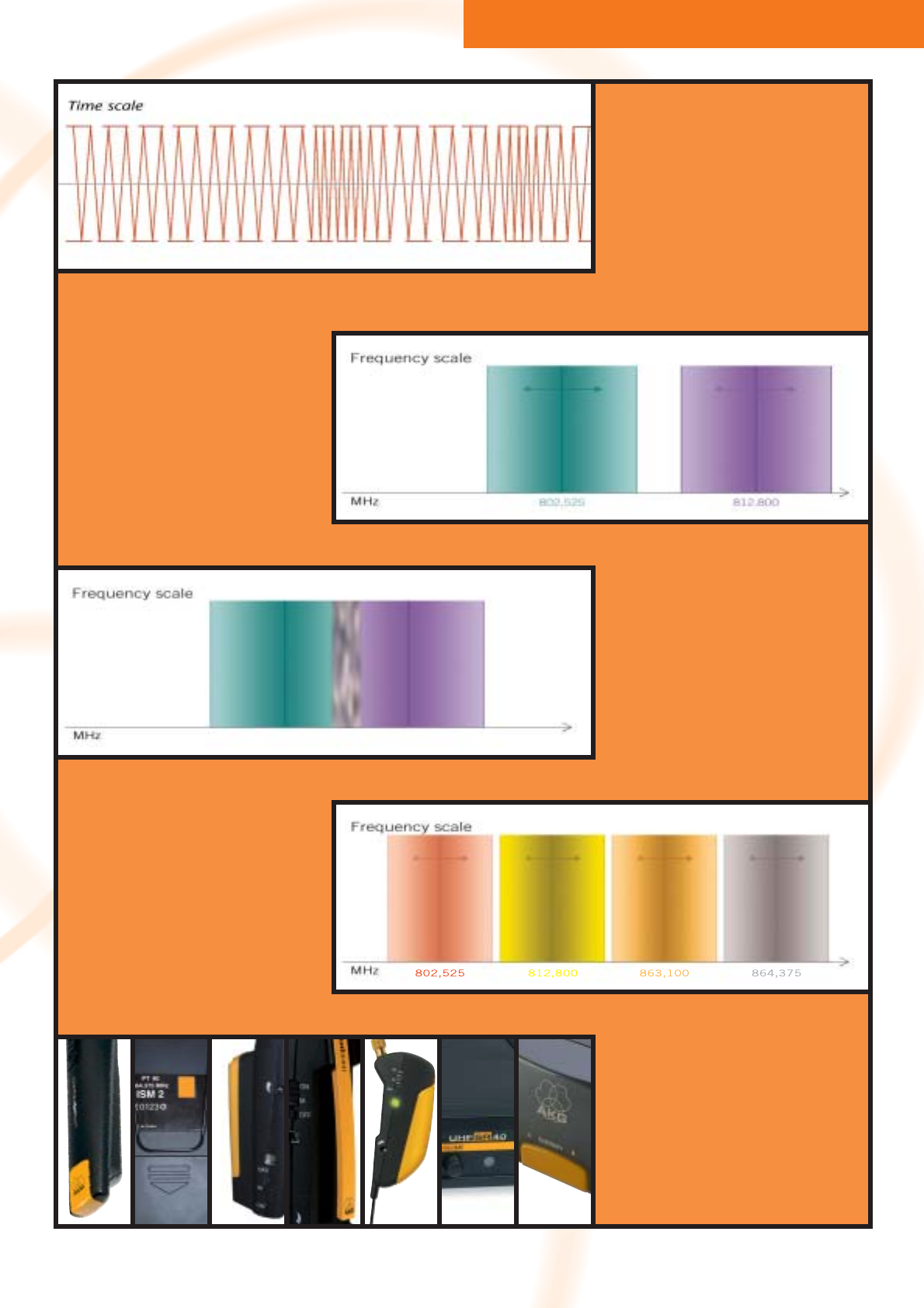
Interference
Overlapping (interference) occurs when the bandwidths of
adjacent signals are too wide, or the carrier frequencies are
too close together. Parts of the signals transmitted lying in
this range are no longer clearly recognized by the receiver,
resulting in noise or dropouts. For this reason it is not pos-
sible for two or more systems to work on the same frequen-
cy. Even if the frequencies are different, one must always
ensure that there is sufficient separation between the fre-
quencies used.
Color coded for easy identification
It is easy to match up transmitters and receivers thanks to
their color coding system. At the same time, the colors also
tell you the carrier frequency used for the radio link.
Transmitters and receivers using the same carrier frequency
are coded with the same color. The color code clips on the
HT 40, SO 40, MP 40, and GB 40 transmitters are removable,
and can be replaced by the black clip provided.
Bandwidth
Every frequency-modulated carrier signal does not oscillate
entirely within the frequency allocated to it, but also occu-
pies frequencies in the adjoining range. This range is known
as “bandwidth”. The wider the available bandwidth is, the
better the transmission quality. Ideally, different carrier sig-
nals should therefore be far enough apart to prevent their
bandwidths from overlapping.
Example of AKG WMS 40 carrier frequencies
AKG has selected fourteen different frequencies as carrier
frequencies for wireless transmission by WMS 40 wireless
systems. There is sufficient separation between them to
ensure trouble-free operation and optimal signal quality. A
maximum of four WMS 40 systems can be operated at any
one time, and care must be taken to ensure that none of the
frequencies are used twice! If more than four radio links are
required simultaneously, AKG offers a series of wireless
systems that make it possible to use a higher number of
channels at once. Please refer to pp. 30 for detailed infor-
mation. The maximum permissible number of channels may
vary depending on national frequency plans.
Frequency Modulation (FM)
Transforming an audio signal into a radio-frequency one and
back again is achieved by means of frequency modulation
(FM). This technology has also been used for decades in UHF
radio to ensure reliable transmission and high signal quali-
ty. This involves imposing an audio signal on a radio-fre-
quency (RF) sine-wave carrier that now begins to oscillate in
time with the audio signal. Variations in the level of the
audio signal (changes in volume) produce frequency chan-
ges in the RF carrier signal (transmission frequency).
Therefore, this technique is known as “frequency modulation”.
www.akg.com 9
➜
➜
➜
➜➜
➜
➜
AKG WMS BASICS


















